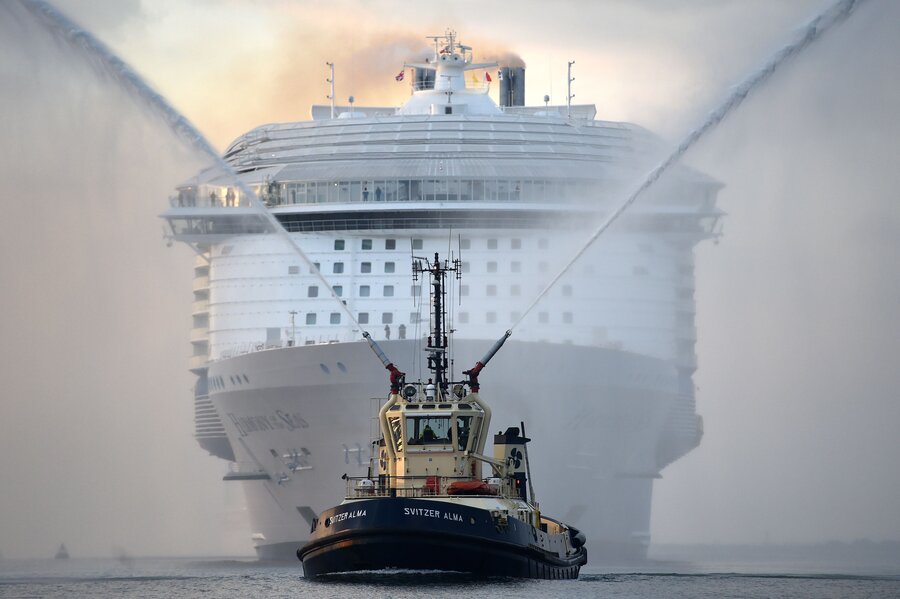Cruise ship damages pristine coral reef. How big an impact do cruises have on the environment?
Loading...
A British cruise line’s ship hit an Indonesian coral reef last week, taking with it 1,600 square meters – about 17,200 square feet – of coral.
While the MV Caledonian Sky and its passengers came out unscathed, residents in the Indonesian archipelago of Radja Ampat are furious. "I was born here, I was in tears when I saw this damage," local dive instructor Ruben Sauyai told the BBC. "The damage is huge and acute. It could take 10 to 100 years to repair it."
A spokesperson for Noble Caledonia, the ship’s owner, stated that the company is “firmly committed to protection of the environment, which is why it is imperative that the reasons for it are fully investigated, understood and any lessons learned incorporated in operating procedures.”
Although Noble Caledonia ships can be much smaller (the Caledonia Sky sleeps 57) than other tourist ships cruising the seas, it now joins a number of other cruise lines to face criticism after an environmental mishap.
“Like any other oceangoing vessel, a cruise ship can affect both the water and the air with its waste products,” explained Slate’s Nina Rastogi in 2009. At the time, one ship’s liquid “waste products” averaged at 21,000 gallons of sewage and 179,000 gallons of “graywater” from sinks and showers each day.
“A complicated patchwork of federal, state, and international laws” determines where and how ships can dump these products, Ms. Rastogi explained. But they haven’t always been enough. Last December, The Carnival Corporation pleaded guilty to seven felony counts after authorities learned that ships operated by its subsidiary, Princess Cruises, had used a “magic pipe” to bypass bilge water treatment systems and dump waste directly overboard.
Princess incurred a $40 million fine, and eight of Carnival’s lines received eight years of Environmental Compliance Program Monitoring. Even if that puts an end to the company’s dumping, environmentalists are also concerned about the massive amounts of high-sulfur diesel fuel chugged by cruise ships.
And last week’s Indonesian grounding isn’t the cruise industry’s first brush with coral reefs either. In December 2015, the MV Zenith, owned by a Spanish subsidiary of Royal Caribbean, dropped anchor near a reef off Grand Cayman. A scuba diver’s video showed the anchor chain “draped across the entire reef, constantly moving back and forth across the reef and causing a lot of damage as it did that.”
Locals in Raja Ampat say they've had similar problems with anchors, but that the MV Noble Caledonia's grounding has caused far more damage to the reef. Tourism organization Stay Raja Ampat wrote that, “Anchor damage from ships like these is bad enough, but actually grounding a ship on a reef takes it to a whole new level.”
Local official Arif Havas Oegroseno said a task force has been has been formed to address the damage. “We are ready to take any possible steps to address the issue,” he told the Associated Press. Those steps could be extreme; under Indonesian law, destroying natural resources like coral reefs is a criminal act, punishable by up to three years in prison.
Regardless of whether someone ends up behind bars, Noble Caledonia also has an incentive to make things right with the local community. With its small vessels and company size, the line takes pains to distinguish itself from the big-ship lines that ply tropical waters around the world.
“Our aim was and remains to always provide a unique, interesting and educational travel experience,” it says on its website. “We operate for the benefit of our passengers who reward us by travelling with us time and time again.” Now, it’s up to those passengers to decide whether the company still deserves their loyalty.
This report contains material from the Associated Press.








